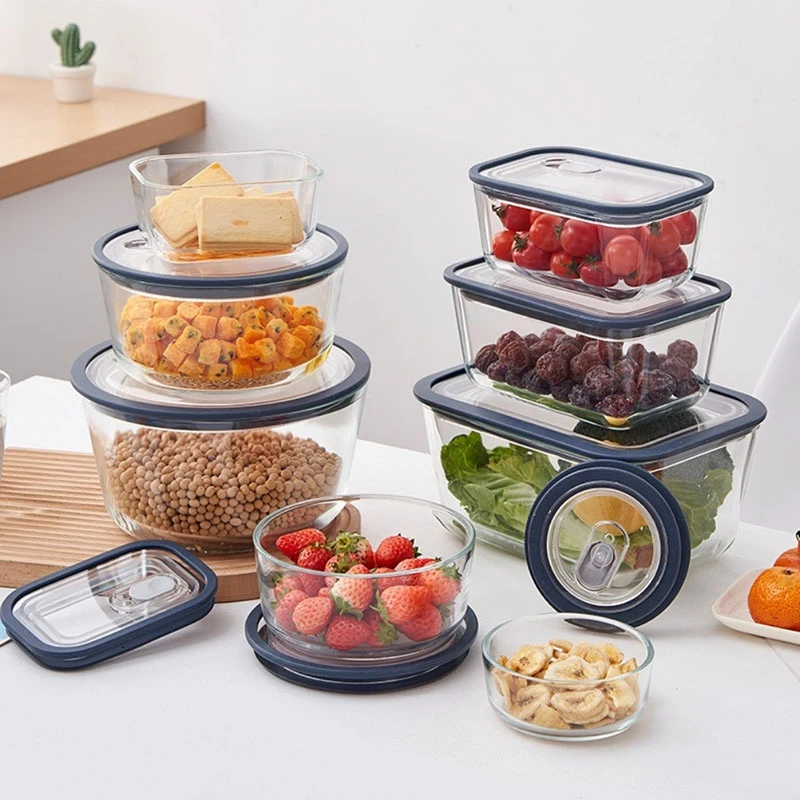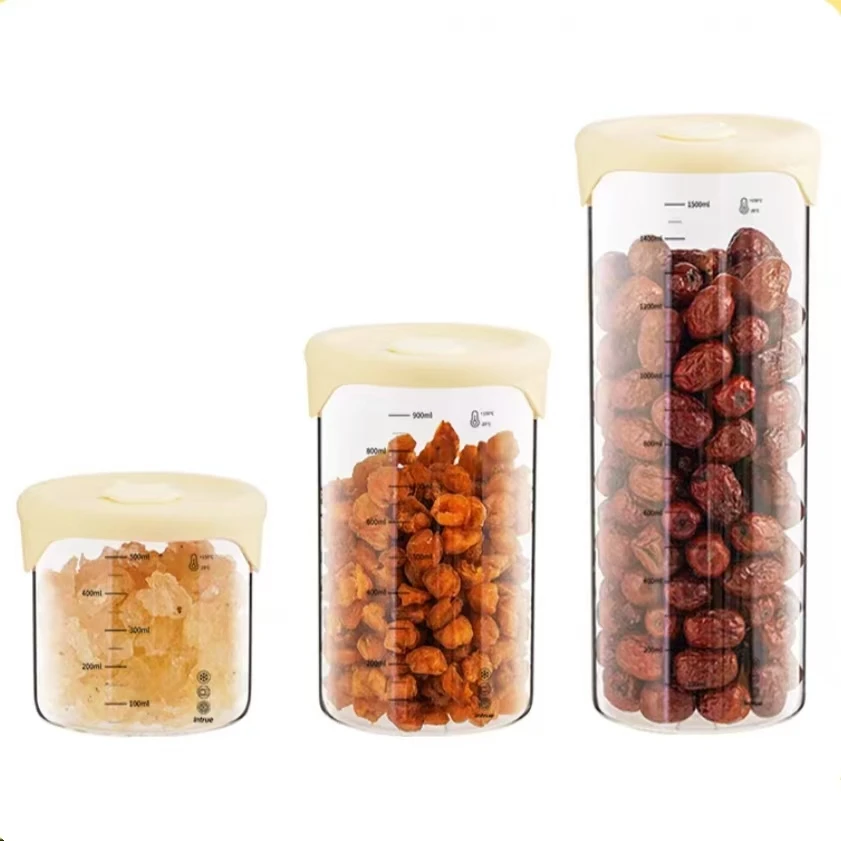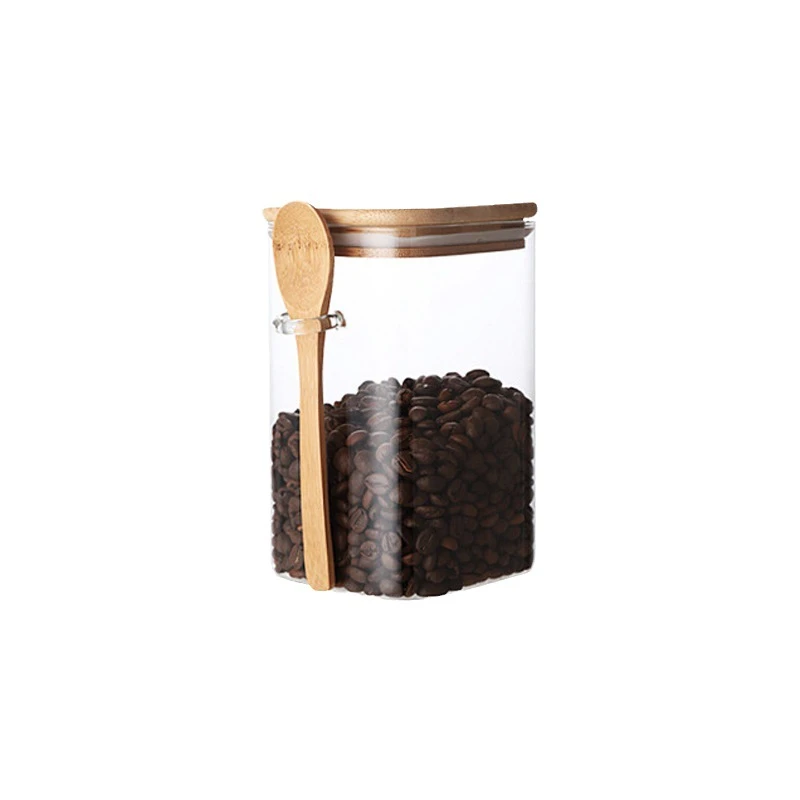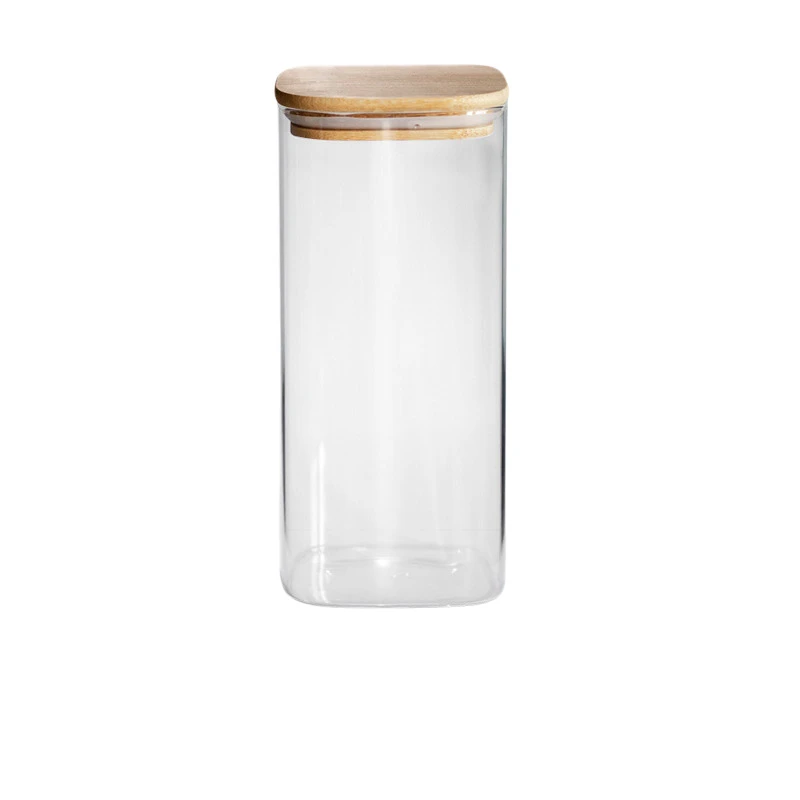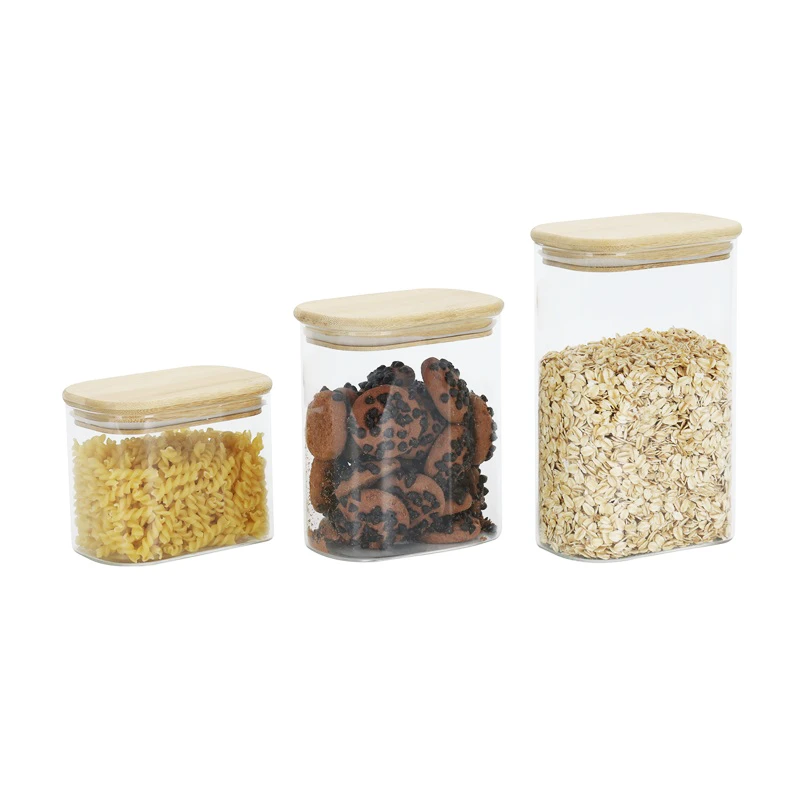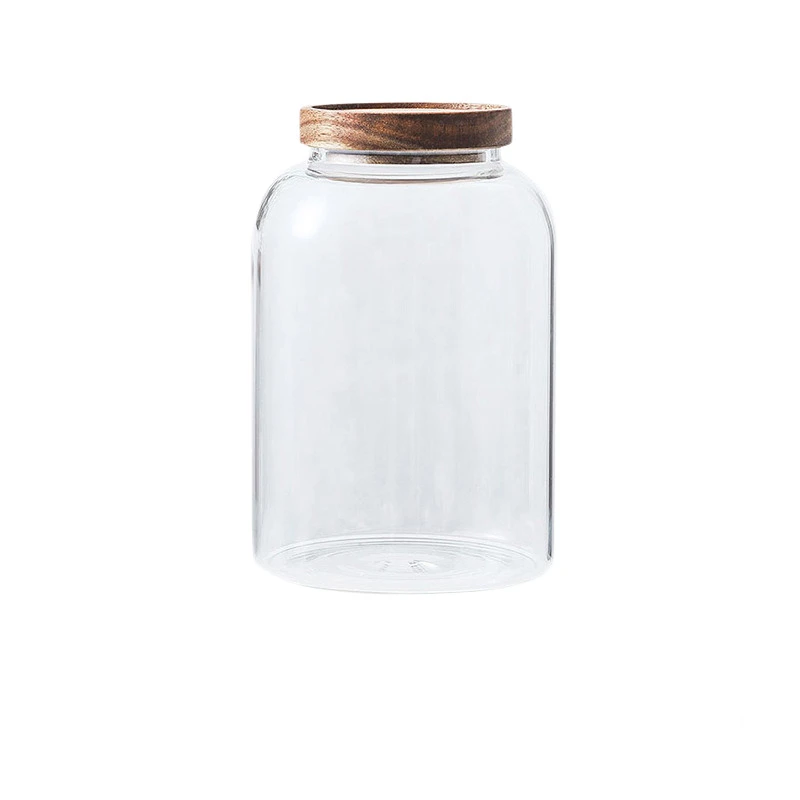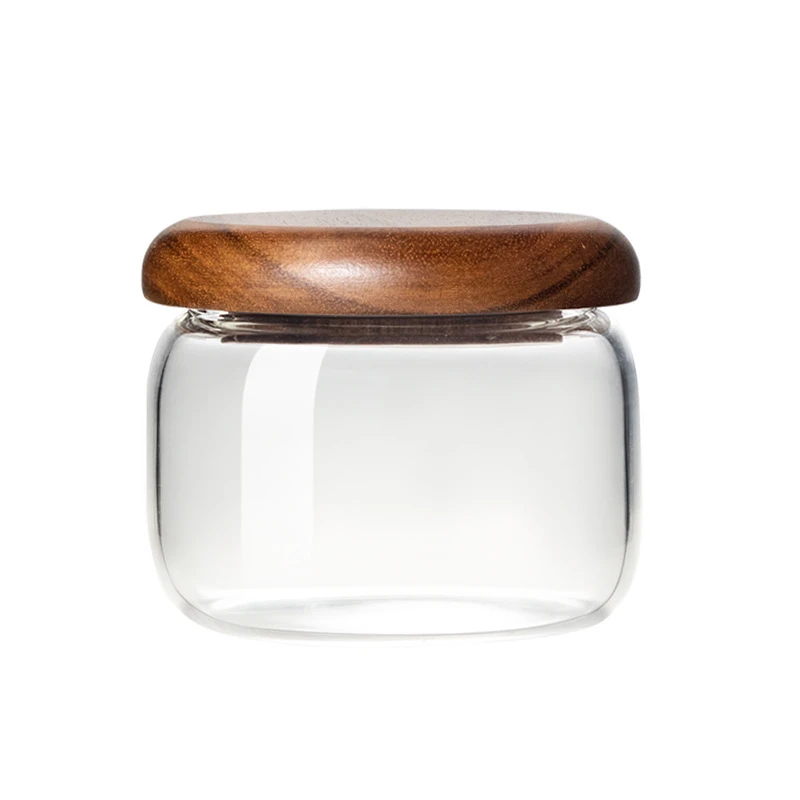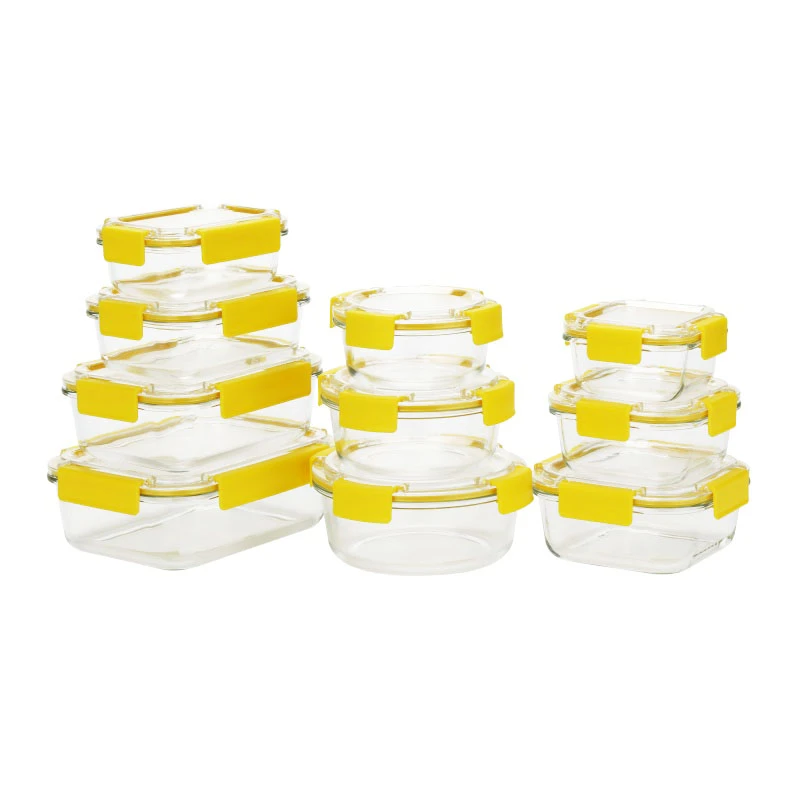 TEL: +86 311 67799298
TEL: +86 311 67799298 Email: tina@yintoglassware.com
Email: tina@yintoglassware.com
Vacuum Meal Prep Containers: Extend Freshness & Save Time
Advancing Food Preservation: The Role of vacuum meal prep container111s in Modern Households and Commercial Kitchens
The landscape of food preservation is undergoing a significant transformation, driven by an increasing global emphasis on sustainability, health, and convenience. In this evolving environment, vacuum meal prep container111s have emerged as a pivotal innovation, offering superior freshness retention and prolonged shelf life compared to traditional storage methods. This shift is not merely a consumer trend but a strategic imperative for businesses operating within the food supply chain, including catering services, institutional kitchens, and direct-to-consumer meal kit providers. The core advantage lies in the ability to remove oxygen, the primary catalyst for food degradation, thereby inhibiting bacterial growth, preventing freezer burn, and preserving nutritional value. Our deep dive into this technology reveals how it addresses critical challenges such as food waste reduction, operational efficiency, and maintaining stringent food safety standards. The adoption of advanced food storage container111s with vacuum pump technology facilitates a more organized and hygienic food management system, crucial for both commercial scalability and individual health. Furthermore, the integration of durable materials like borosilicate glass with intelligent lid designs signifies a commitment to product longevity and reusability, aligning with broader ecological goals and reducing reliance on single-use plastics.
Beyond mere preservation, the strategic deployment of vacuum meal prep container111s contributes to a refined logistical process for food businesses. By extending the viable window for prepared meals and ingredients, companies can optimize their procurement cycles, minimize spoilage, and enhance inventory management. This not only translates to significant cost savings but also supports a more consistent product offering for end-users. For instance, in catering, pre-prepped components stored under vacuum maintain their integrity, flavor, and texture for extended periods, allowing for more flexible preparation schedules and ensuring peak quality at the point of service. The underlying technology often involves sophisticated vacuum pumps, either integrated into the lid or as a separate handheld device, designed for ease of use and consistent performance. This mechanical precision, coupled with robust sealing mechanisms, ensures an airtight environment critical for effective food preservation. Understanding the intricate balance between material science, design innovation, and functional utility is paramount for stakeholders evaluating these solutions. The move towards more robust and aesthetically pleasing options, such as those made from high-quality glass, further elevates their appeal in professional settings where presentation and durability are key considerations.
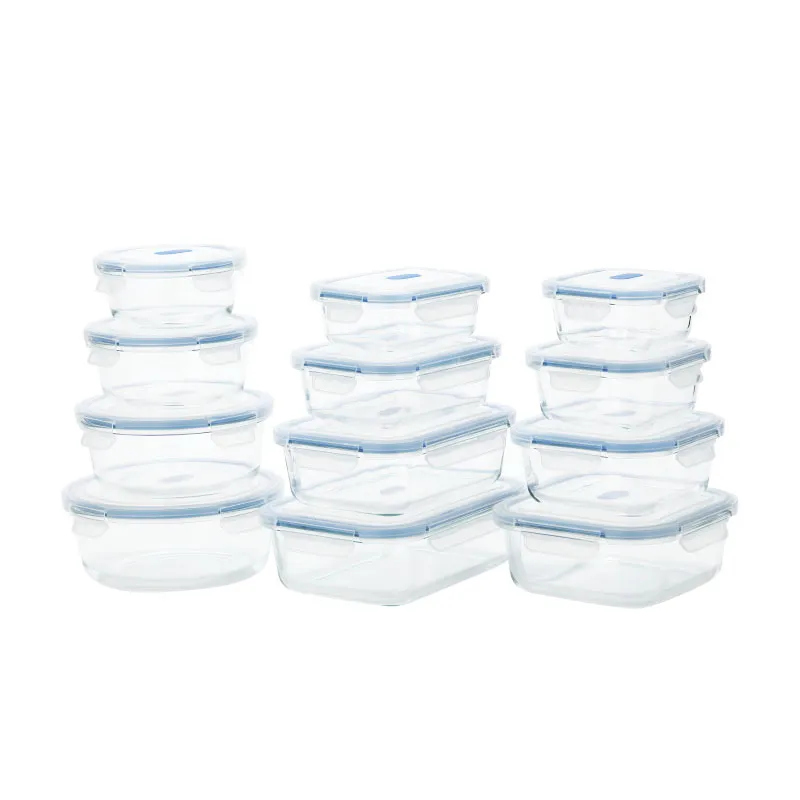
Manufacturing Precision: The Crafting of High-Performance Glass Vacuum Containers
The production of advanced vacuum meal prep container111s, particularly those featuring a glass body and a vented plastic lid, involves a sophisticated multi-stage manufacturing process that combines precision engineering with material science expertise. The glass body component, typically made from high borosilicate glass, is produced through a molten glass forming process. Raw materials, primarily silica sand, soda ash, and limestone, are meticulously weighed and mixed, then melted in a high-temperature furnace exceeding 1700°C. This molten glass is then fed into automated molding machines, where it is pressed or blown into the desired container111 shape. Precision molds ensure uniform wall thickness and defect-free surfaces, critical for both aesthetic appeal and structural integrity. Following the molding phase, the glass container111s undergo an annealing process, where they are slowly cooled in a controlled environment to relieve internal stresses, significantly enhancing their thermal shock resistance and overall durability. This rigorous process adheres to international quality standards such as ISO 9001 for quality management systems and often meets specific ASTM standards for glass used in food contact applications, ensuring safety and longevity.
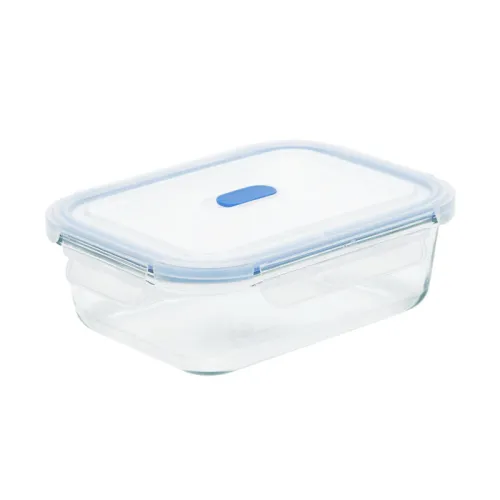
Simultaneously, the vented plastic lids, which are integral to the vacuum sealing mechanism, are manufactured using advanced injection molding techniques. High-quality, food-grade polypropylene (PP) or Tritan, often BPA-free and FDA-approved, is heated and injected into precisely engineered molds under high pressure. This process allows for intricate designs, including integrated vacuum valves, robust sealing gaskets (typically silicone), and secure locking mechanisms. Post-molding, the plastic components undergo stringent quality checks for dimensional accuracy, material consistency, and freedom from defects. Assembly then integrates the various lid components, including the vent and pump mechanism, with the glass body. Each assembled unit of reusable vacuum seal container111s undergoes final quality assurance, including leak tests, vacuum retention tests, and simulated usage tests to ensure optimal performance and an extended service life, typically exceeding thousands of vacuum cycles. This multi-faceted manufacturing approach guarantees that each container111 performs reliably in diverse environments, from professional catering to everyday home use, emphasizing their superior anti-corrosion properties and energy-saving potential through reduced food waste.
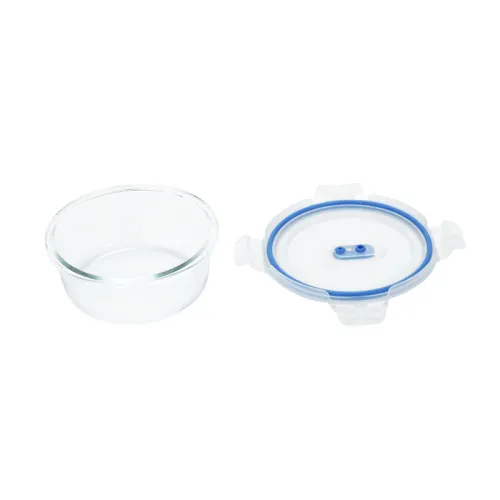
Technical Specifications and Performance Metrics
The efficacy of vacuum meal prep container111s hinges on a precise set of technical parameters and performance metrics that collectively define their ability to preserve food. Key among these is the vacuum pressure achievable, typically ranging from -30 kPa to -60 kPa, which directly correlates to the oxygen removal efficiency. A deeper vacuum significantly retards aerobic bacterial growth and enzymatic browning. Material composition is equally critical; borosilicate glass, known for its exceptional thermal resistance, allows for safe use across a wide temperature spectrum, from freezer conditions as low as -20°C (-4°F) to oven heating up to 400°C (752°F), making it versatile for various food preparation and reheating methods. The lids, often crafted from food-grade PP or ABS with silicone gaskets, must provide an impenetrable seal, tested for air leakage rates to ensure long-term vacuum retention. These materials also guarantee compliance with strict international food safety regulations, including FDA and LFGB standards, ensuring no harmful chemicals leach into food.
Durability and longevity are further quantified by product specifications such as expected service cycles for the vacuum mechanism, which for high-quality units can exceed 10,000 uses without significant degradation in sealing performance. Compatibility with different cleaning methods, including dishwasher safety, is also a crucial operational parameter for both commercial and household users. The structural integrity of the container111s, particularly their resistance to impacts and thermal shock, is assessed through rigorous testing protocols. For instance, drop tests from specific heights and rapid temperature change tests are performed to validate resilience under typical usage conditions. Understanding these technical nuances allows businesses to select food storage container111s with vacuum pump that align with their specific operational demands, whether it's for high-volume kitchen operations or specialized food product distribution. The table below provides a comparative overview of typical parameters, highlighting the benchmarks for superior performance in this product category.

Comparative Technical Specifications for Vacuum Meal Prep Containers
| Feature | Standard Quality Containers | Premium Glass Vacuum Containers (e.g., Yinto Glassware) |
|---|---|---|
| Body Material | Soda-lime glass / Standard plastic | Borosilicate Glass (High Thermal Shock Resistance) |
| Lid Material | PP / PE | Food-grade PP/ABS with Silicone Gasket (BPA-free) |
| Temperature Range | -10°C to 120°C (14°F to 248°F) | -20°C to 400°C (-4°F to 752°F) |
| Achievable Vacuum Pressure | -15 kPa to -30 kPa | -40 kPa to -60 kPa (Optimal for food preservation) |
| Dishwasher / Microwave / Oven Safe | Limited / Yes / No | Yes (Glass body oven safe up to 400°C, Lid Microwave safe, Hand wash recommended for lid vacuum valve) |
| Certifications | Basic Food Grade | FDA, LFGB, BPA-free |
| Expected Service Life (Vacuum Cycles) | ~1,000 - 3,000 cycles | >10,000 cycles (for vacuum mechanism) |
Application Scenarios and Industry Impact
The versatility of vacuum meal prep container111s extends across numerous sectors, proving invaluable wherever food freshness, extended shelf life, and optimized logistics are paramount. In the commercial catering industry, these container111s facilitate advance meal preparation, allowing chefs to manage fluctuating demand more effectively without compromising on food quality. Prepared ingredients and sauces can be stored days in advance, retaining their vibrant flavors and nutritional integrity, which is crucial for high-volume operations. Restaurants, particularly those offering takeout or delivery services, leverage vacuum storage container111s with pump to maintain the quality of cooked dishes, ensuring they arrive at the consumer's table as intended. This also drastically reduces food spoilage, a major contributor to operational waste and cost in the food service sector. For B2B suppliers dealing with perishable goods, such as specialty food distributors or organic produce vendors, vacuum container111s provide a robust solution for preserving products during transit and storage, minimizing losses and extending market reach.
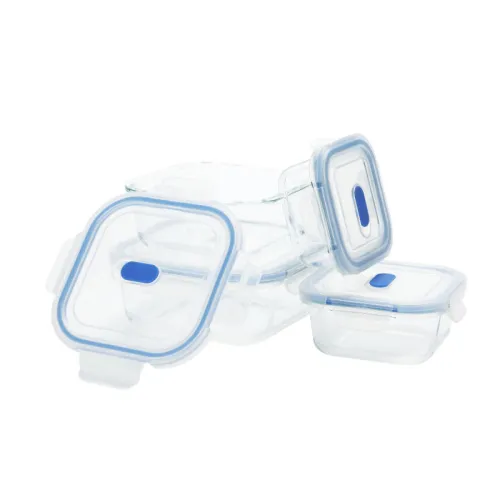
Beyond traditional food service, the application of vacuum meal prep container111s is gaining traction in specialized fields. Health-focused meal delivery services, for instance, rely on vacuum sealing to guarantee the freshness and nutrient retention of their prepared meals, directly impacting customer satisfaction and repeat business. Hospitals and care facilities also benefit by using these container111s to pre-portion meals, ensuring hygienic handling and extended edibility for patients. In the context of industrial food processing, while not replacing large-scale vacuum packaging machinery, these smaller, reusable container111s serve critical roles in quality control, sample preservation, and batch testing within laboratories. Their ability to create an oxygen-deprived environment is also valuable for specific culinary techniques like sous-vide, demonstrating their utility beyond simple storage. The economic advantages are clear: reduced food waste, extended ingredient usability, and enhanced logistical flexibility collectively lead to significant operational savings and improved profitability across diverse commercial and industrial food handling environments.
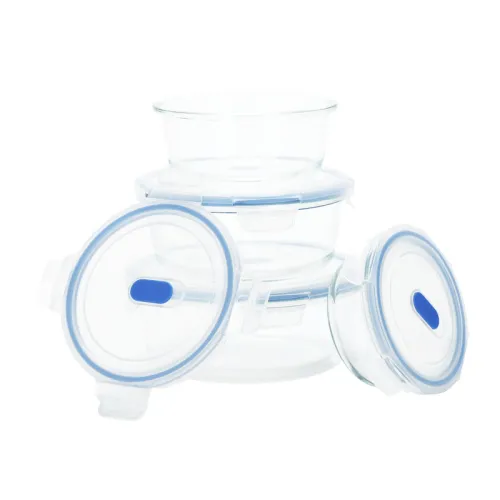
Custom Solutions and Client Success Stories
Recognizing the diverse needs of our B2B clientele, we specialize in providing tailored solutions for vacuum meal prep container111s, moving beyond standard off-the-shelf offerings. Customization options extend to various aspects, including container111 capacities, specific shapes for optimized storage or transportation, branded lid designs incorporating company logos, and even bespoke vacuum pump mechanisms integrated directly into existing kitchen workflows. For a prominent regional airline catering service, we developed a series of multi-compartment glass vacuum container111s designed to optimize meal assembly and reduce preparation time significantly. These custom units, fabricated to fit standard airline trolley sizes, allowed for pre-sealed appetizers and desserts, extending their freshness during flights and dramatically cutting down on on-board waste. This client reported a 15% reduction in food spoilage and a measurable improvement in passenger satisfaction due to the perceived freshness of meals, demonstrating the tangible ROI of tailored vacuum seal freezer container111s.
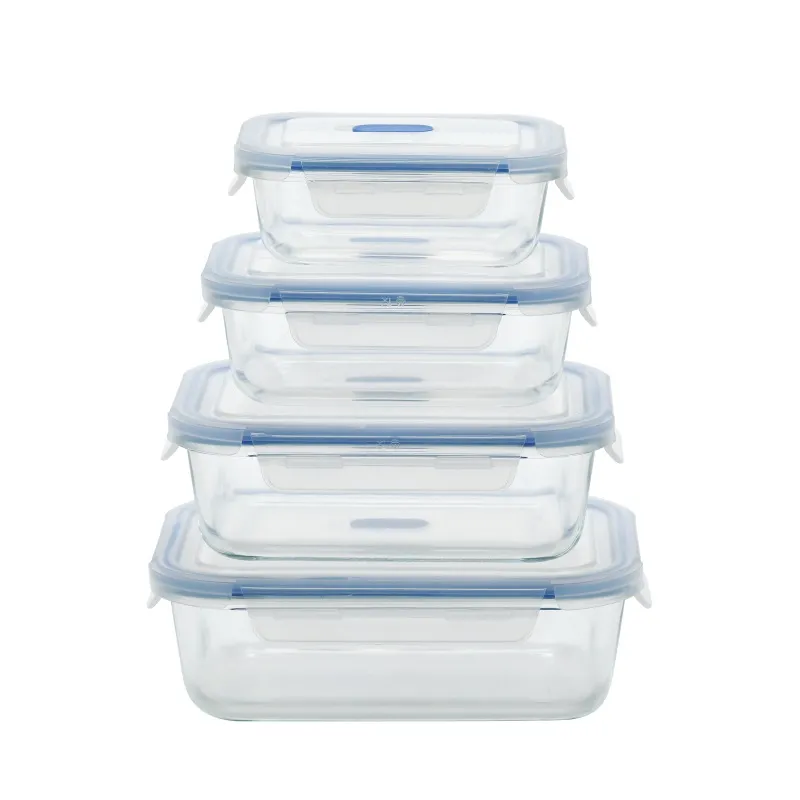
Another compelling case study involves a chain of organic grocery stores seeking a sustainable solution for their in-store prepared foods section. They needed reusable vacuum seal container111s that were not only highly effective at preserving freshness but also aligned with their eco-friendly brand image. We designed a range of glass container111s with color-coded, vacuum-vented lids that allowed for easy differentiation of meal types (e.g., vegan, gluten-free). The integrated pump system was user-friendly for both staff and customers. This implementation resulted in a notable increase in sales for their prepared meals, attributed to the extended shelf life and the visible commitment to sustainability, as reported by the client's internal sales data which showed a 20% uplift in this category. Our commitment to rigorous testing, including compliance with FDA and LFGB standards for all custom materials, ensures that every bespoke solution delivers unparalleled performance and reliability, reinforcing client trust and fostering long-term partnerships.

Ensuring Trust: Quality Assurance, Delivery, and Support
Trust is the cornerstone of any B2B relationship, and for vacuum meal prep container111s, this translates into unwavering product reliability and comprehensive customer support. Our quality assurance protocols are multi-layered, beginning with raw material sourcing, where every batch of borosilicate glass and food-grade plastic undergoes rigorous inspection for purity and composition, validated by independent laboratory analyses. Throughout the manufacturing process, automated optical inspection systems detect even microscopic defects, while manual checks by certified technicians ensure product consistency. Finished goods are subjected to a battery of performance tests, including vacuum retention duration, thermal shock resistance, and long-term sealing integrity. This commitment to quality is underscored by our adherence to international certifications such as ISO 9001:2015, which governs our entire quality management system, and specific product certifications like FDA and LFGB, providing verifiable proof of compliance with global food safety standards. Our extensive service record, spanning over a decade in specialized glassware manufacturing, attests to our consistent delivery of high-quality solutions.
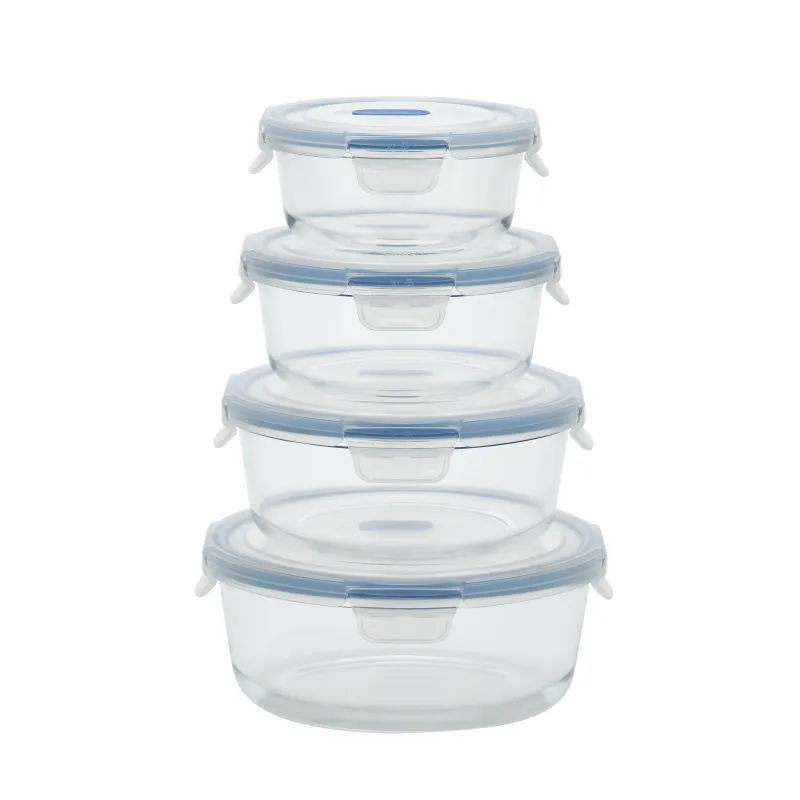
Efficient logistics and responsive post-sales support are equally vital components of our trustworthiness. We understand that timely delivery is critical for commercial operations, and our established supply chain ensures competitive lead times, typically ranging from 4 to 8 weeks for standard orders, with expedited options available for urgent requirements. Each order is meticulously packaged to prevent damage during transit, using eco-friendly materials where possible. Our warranty commitment covers manufacturing defects for a period of two years from the date of purchase, providing peace of mind and demonstrating our confidence in product durability. Beyond this, our dedicated customer support team is available to assist with any technical inquiries, operational challenges, or reordering needs, ensuring a seamless experience for our partners. This holistic approach, from initial consultation and bespoke design to rigorous quality control and continuous support, solidifies our position as a trusted provider of high-performance vacuum meal prep container111s for the B2B market.

Frequently Asked Questions (FAQ)
1. What is the typical lifespan of a vacuum meal prep container111 and its sealing mechanism?
The lifespan of a high-quality vacuum meal prep container111, particularly those with a borosilicate glass body and robust plastic lid, is highly dependent on usage and maintenance. The glass component itself is exceptionally durable, resistant to staining, odors, and thermal shock, offering a lifespan of many years or even decades with proper care. The vacuum sealing mechanism, including the silicone gasket and pump valve, is typically rated for thousands of vacuum cycles. For premium products like ours, the vacuum mechanism can reliably perform for over 10,000 cycles, translating to several years of daily use in a commercial setting. Regular cleaning and careful handling of the lid components, especially avoiding abrasive cleaners, will maximize the longevity of the vacuum seal.
2. Are these vacuum seal freezer container111s safe for all types of food, including acidic or oily items?
Yes, our vacuum seal freezer container111s made from borosilicate glass are exceptionally safe and inert for all types of food, including highly acidic foods (like tomato sauce or citrus), oily dishes, and aromatic ingredients (like garlic or spices). Borosilicate glass does not leach chemicals into food, nor does it absorb odors, flavors, or stains, ensuring pure food contact. The food-grade plastic lids and silicone gaskets are also rigorously tested and certified to be free of BPA, phthalates, and other harmful substances, complying with strict FDA and LFGB regulations. This makes them ideal for long-term storage of diverse food items, maintaining their original taste and quality without contamination.
3. How do these container111s contribute to reducing food waste in commercial settings?
By removing up to 80% of the air and thereby significantly reducing oxygen exposure, vacuum meal prep container111s drastically slow down the oxidation process, enzymatic browning, and growth of aerobic bacteria and mold. This extends the freshness of perishable ingredients and prepared meals by up to five times compared to conventional storage. For commercial kitchens, this translates directly into reduced spoilage of raw materials and cooked dishes, optimizing inventory management and leading to substantial cost savings. Caterers can prepare components in advance, and restaurants can preserve leftovers or pre-portioned items for longer, directly mitigating food waste and enhancing profitability, aligning with global sustainability initiatives.
4. What certifications do your reusable vacuum seal container111s hold?
Our reusable vacuum seal container111s are manufactured under stringent quality control and hold several key certifications. Our manufacturing facilities are ISO 9001:2015 certified, signifying a robust and globally recognized quality management system. Furthermore, our products, particularly the materials in contact with food, comply with essential food safety standards such as those set by the U.S. Food and Drug Administration (FDA) and the German Food, Commodities and Feed Act (LFGB), which are widely respected benchmarks for food-grade materials and products in Europe and beyond. These certifications provide independent verification of our commitment to safety, quality, and environmental responsibility, ensuring our container111s are fit for purpose in any professional environment.
Conclusion: The Future of B2B Food Preservation
The increasing demand for efficiency, sustainability, and quality in the food industry positions vacuum meal prep container111s as an indispensable tool for B2B entities. From enhancing operational logistics in commercial kitchens to ensuring pristine product quality for meal delivery services, these advanced container111s offer a multifaceted solution to modern food preservation challenges. The blend of durable, inert materials like borosilicate glass with precision-engineered vacuum sealing technology guarantees superior freshness retention, reduced waste, and adherence to the highest food safety standards. Our commitment to customized solutions and a comprehensive support framework further distinguishes our offerings, enabling businesses to unlock significant efficiencies and deliver unparalleled value to their end-users. Embracing this technology is not just about adopting a new product; it's about investing in a strategic asset that drives long-term profitability and sustainable growth in a competitive market.
References
- Institute of Food Technologists. (2023). Advances in Food Preservation Technologies and Shelf-Life Extension.
- Food and Drug Administration (FDA). (2022). Guidance for Industry: Food-Contact Substances.
- International Organization for Standardization (ISO). (2022). ISO 9001:2015 Quality Management Systems – Requirements.
- Journal of Food Science. (2021). Impact of Oxygen Permeability on Vacuum-Packaged Food Quality.
- European Food Safety Authority (EFSA). (2023). Scientific Opinion on the Safety of Plastic Food Contact Materials.
-
Unparalleled Convenience by High Borosilicate Glass Bottle with a Cork LidNewsJul.17,2025
-
The Versatility and Convenience of Glass Salad Bowl SetsNewsJul.17,2025
-
The Practical Wide Application of High Borosilicate Glass Food Storage ContainerNewsJul.17,2025
-
High Borosilicate Colored Glass Bowl VS Soda-Lime Glass and Tempered GlassNewsJul.17,2025
-
Creativity with Customized Colored Glass Dinnerware Sets for SaleNewsJul.17,2025
-
Advantages Analysis of Double Wall French PressNewsJul.17,2025


